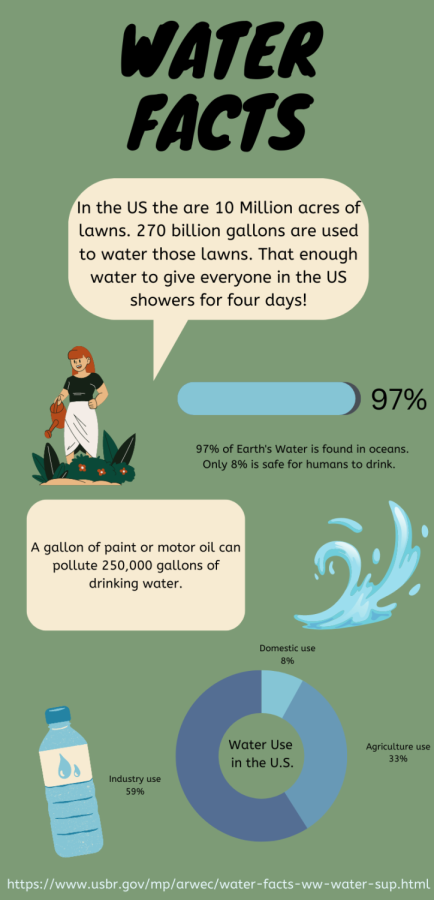Freshwater is life for all living things. Unfortunately, the supply of freshwater in the United States has become alarmingly scarce.
Two of the largest reservoirs in America are at risk of reaching an alarmingly low water level, coined “dead pool” status. In addition to man-made freshwater sources, natural freshwater sources are also being negatively impacted. The Colorado River, a necessity to many ecosystems and people, has experienced a major climate-change-induced drought in the past decade. The higher temperatures have caused more runoff from rain and snow to evaporate before it reaches the river.
Chris Peterson, an instructor for the National Outdoor Leadership School and a member of the ski patrol at Loveland Ski Resort in Colorado, is able to observe the importance of water first hand. “While living and traveling in the wilderness, I’ve been able to see the many ways water supports life,” he stated. “By taking water straight from a stream or lake I’ve created a strong relationship with water.”
71% of the Earth is covered in water, but only 3% of that water is freshwater, the type of water able to sustain life of animals and plants. Roughly 1% of freshwater is easily accessible for consumption, as the majority of freshwater is locked up in glaciers, polar ice caps and soil. Ultimately, only 0.01% of all water on Earth is easily accessible for the sustaining of human and animal life.
The supply of fresh water, despite being a vital and relatively scarce resource for many people and animals, has been repeatedly abused and misused by the growing population of the human race. Water pollution, overuse of water and climate change have all contributed to the decreasing availability of freshwater. Annually, approximately 1.2 trillion gallons of sewage and industrial waste is dumped into US water sources. Every day, the average American uses 82 gallons of water.
Anagha Sudhindra, the co-President of the PV Environmental Club recognizes the problem. “Protecting and preserving fresh water sources should be acted upon now more than ever due to our growing population and global temperature,” she said.
While there have been many efforts to clean water sources and fix the damage done, society needs to reflect on our innate view of water as a resource.
It is easy for people to take water for granted in today’s society due to how accessible it is in everyday life. “It is easy to open the faucet and take for granted the flowing water that comes out, until it comes out contaminated or until it doesn’t come out at all,” Peterson continued. “Water is a resource but first and foremost it is life.”
In order to preserve “life” in the country and in the environment, society must work to change their perspective on freshwater. Whether it is advocating for natural water sources or protesting the purchase of water in industrial development, any move towards protecting water is a move to protect life.











Malayna Albertson • Oct 4, 2022 at 12:42 pm
I just found it extremely crazy how 71% of earth is water I have always known that but I had no clue only 3% of it is clean water.